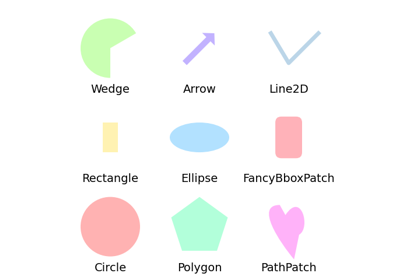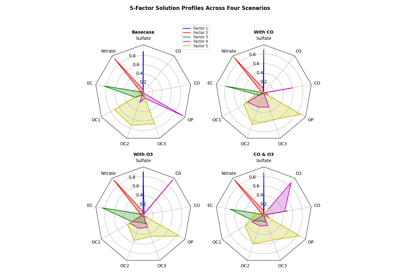matplotlib.patches.RegularPolygon¶
-
class
matplotlib.patches.RegularPolygon(xy, numVertices, radius=5, orientation=0, **kwargs)[source]¶ Bases:
matplotlib.patches.PatchA regular polygon patch.
Constructor arguments:
- xy
- A length 2 tuple (x, y) of the center.
- numVertices
- the number of vertices.
- radius
- The distance from the center to each of the vertices.
- orientation
- rotates the polygon (in radians).
Valid keyword arguments are:
Property Description agg_filtera filter function, which takes a (m, n, 3) float array and a dpi value, and returns a (m, n, 3) array alphafloat or None animatedbool antialiasedor aaunknown capstyle{'butt', 'round', 'projecting'} clip_boxBboxclip_onbool clip_pathPatch or (Path, Transform) or None colorcolor containscallable edgecoloror eccolor or None or 'auto' facecoloror fccolor or None figureFigurefillbool gidstr hatch{'/', '\', '|', '-', '+', 'x', 'o', 'O', '.', '*'} in_layoutbool joinstyle{'miter', 'round', 'bevel'} labelobject linestyleor ls{'-', '--', '-.', ':', '', (offset, on-off-seq), ...} linewidthor lwfloat or None path_effectsAbstractPathEffectpickerNone or bool or float or callable rasterizedbool or None sketch_params(scale: float, length: float, randomness: float) snapbool or None transformTransformurlstr visiblebool zorderfloat -
get_patch_transform(self)[source]¶ Return the
Transforminstance which takes patch coordinates to data coordinates.For example, one may define a patch of a circle which represents a radius of 5 by providing coordinates for a unit circle, and a transform which scales the coordinates (the patch coordinate) by 5.
-
property
numvertices¶
-
property
orientation¶
-
property
radius¶
-
property
xy¶

